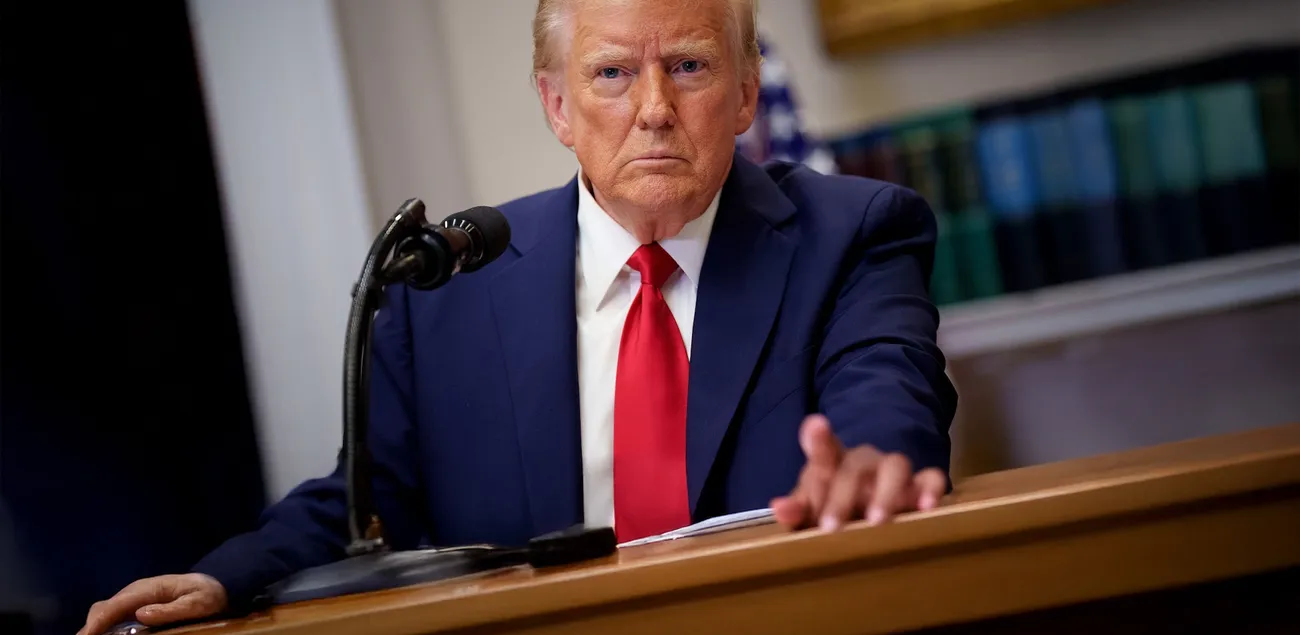
Prices of gold had wildly oscillated on July 7 in America, after spot gold reclaimed earlier losses that were prompted by United State President Trump’s comments that unveiled novel tariff plans aimed at Japan and South Korea. Precious metal concluded at $3,336.30 per ounce, after experiencing spectacular action throughout the day that had spot gold earlier at $3,296, but later rebounded above more than $40 to $3,340 during New York hours.
Yesterday’s session comprised gold’s double status of a dollar-sensitive but dollar-safe refuge, prompted by Trump’s 25% tariffs on Japanese and South Korean products, which were initiated on August 1, lifted buying interest in the precious metal in initial hours, but gains remained subdued on the upper side because of a firm American dollar that jumped by near 0.6% against major trading partners.
Trump Stirs Up Trade Rancors Among Asian Allies
President Trump revealed letters to Japan, South Korea, and 15 other nations on Monday that threatened across-the-board increases in tariffs and also suspended a deadline for negotiation until August 1st. The tariff threat, while more severe than earlier moves, when Trump, in justifying increases of the new tariffs, had cited “highly unequal” trade agreements.
There are also structure provisions for tariffs for businesses that will shift their production to America, which will not penalize them for their new tariffs. Also, threatened Trump that if Japan or South Korea will strike back, they will have to face more tariffs of the same magnitude in addition to their 25% base rate. All-encompassing tariffs of this type are broader than sectoral tariffs, which will penalize all commodities of both nations except anti-circumvention clauses in order to deter transshipment via third nations.
Last three months’ negotiation has reaped little other than initial agreements signed between Vietnam and United Kingdom. Negotiations, which have been conducted for Japan, South Korea, and India, have done worse, also being accountable for Trump’s aggressive remarks in his most recent comments.
Safe-Haven Demand Fuels Market Rebound
Financial markets responded tothe tariff announcemewithmixed signals. Major American stocks droppedas investors weighedthe economic cost of heightened trade protection. DXY key dollar strength, also responsible in part due to safe-haven buying, remained a headwindfor gold prices, yet gold long has provided a hedgea gainst trad euncertainty.
Technical analysis recommends gold staying in a bullish trend even after Friday’s highly erratic day of trading. It stayed above its 50-day simple moving average of $3,320 per ounce, and technical analysts talked about their lines of resistance in $3,350 and $3,400. Support lines are at $3,300, then June 30th’s swing low of $3,246.
China Extending Gold Build-Up Plan
People’s Bank of China published its eighth straight months of increases in gold reserve holdings in June, aiding in spreading a wider trend of dollar-linked assets diversification amongst central banks. China’s gold reserves stood at 73.90 million fine troy ounces by end June, worth $242.93 billion compared to $241.99 billion in May.
Recent increases are also part of China’s strategic plan to have greater dependencies upon non-US dollar currencies with increasing geopolitical tensions. OANDA’s Zain Vawda also commented that China’s People’s Bank “pursues foreign exchange reserve diversification, and increasing uncertainty and geopolitical risks could hasten this process”.
Active purchasing by central banks has offered price provisional support during 2025, and foreign institutions have held the metal in their books to hedge themselves from currency flows and inflationary gains. Bank of America also believes that it will persist because central banks are looking to have lower dollar exposure and more economic resilience.
Fed Policy Stance Still Takes Backseat
Markets are also awaiting Federal Reserve pronouncements that will frame forward interest rate policy. This week, minutes of the most recent central bank meeting will reaffirm policymakers’ view of inflation indicators and economic prospects.
Markets are now pricing that there will not be a rate cut in July by Fed, and just two quarter-point reductions by year’s end. Trump’s tariffs have also gotten everyone worried about reemerging inflationary forces that will breathe life into Fed’s money choices.
Yield on benchmark 10-year Treasury notes remained steady, trading around three-week high levels. Higher rates are costlier for carrying non-yielding assets such as gold, which are other headwinds to the precious metal apart from dollar strength.
Company History and Market Environment
Gold trading has various market players such as central banks, institutional investors, and retail traders. The London Bullion Market Association is the main global center for gold trading, with its pricebeing determined by monetary policy, geopolitical tensions, and currency fluctuations.
Major gold producers include Barrick Gold, Newmont, and AngloGold Ashanti, while significant consumers encompass jewelry manufacturers, technology companies, and investment funds. The precious metals market operates across multiple time zones, with key trading sessions in London, New York, and Asian markets.
Gold prices continue to trade at high levels relative to their historical range, amidst persisting economic uncertainty and monetary policy accommodation. The metal has appreciated by some 40% over the lastyear, underpinned by central bank buying, geopolitical unrest, and fearsof currency debasement.
Gold’s utility as a portfolio diversifier and inflation hedge still temptsinstitutional and retail investors. Exchange-traded funds that follow gold prices have experienced considerable inflows, while physical demand for gold is holding up in major markets such as India and China. The relative performance of the precious metal against otherassets hinges to a large extent on real interest rates, dollar strength, and risk appetite in global markets.



